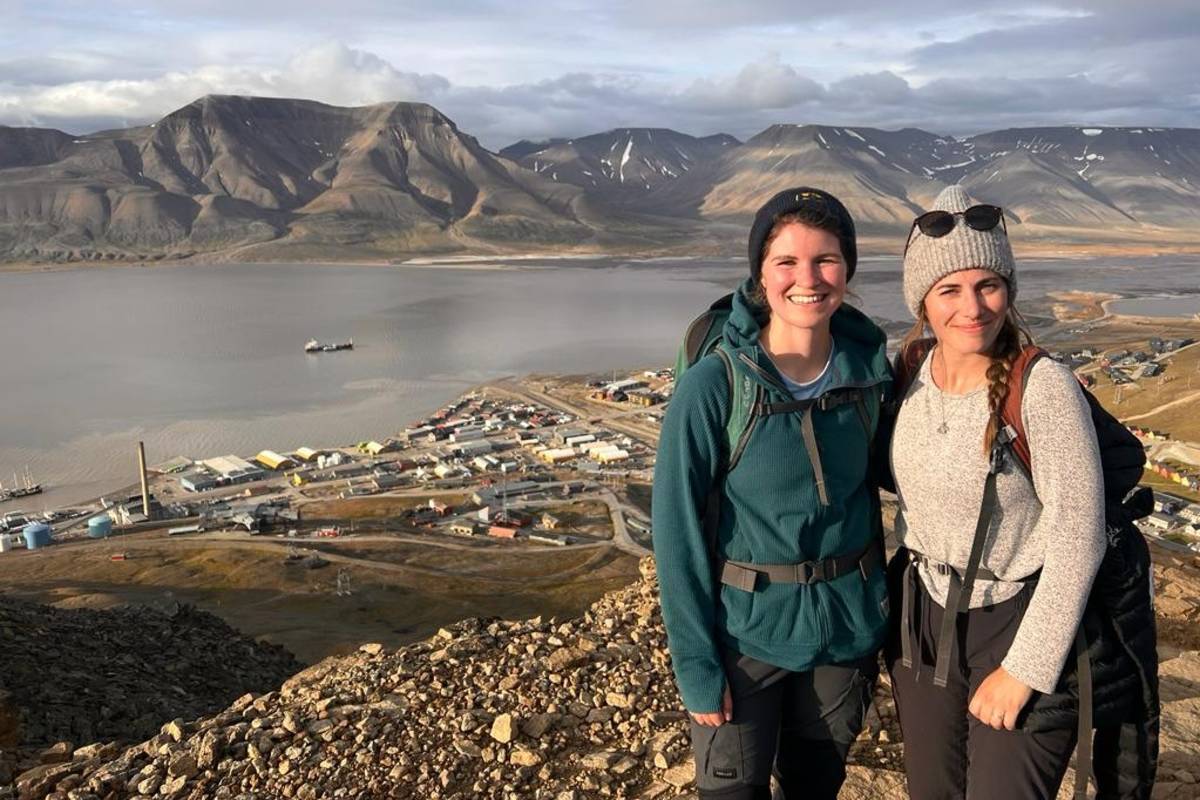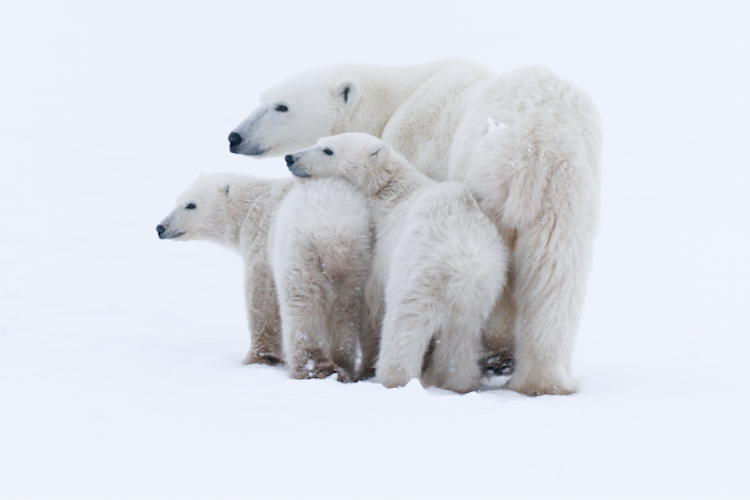What was your impression of Longyearbyen and the parts of Svalbard you saw?
Dr. Louise Archer: With old coal mining infrastructure punctuating the landscape and the midnight sun spotlighting the rolling glaciers just visible across the fjord, Longyearbyen was a stunningly unique place. The laid-back town could transform into a bustling hub with impressive speed at the arrival of a cruise ship, but I fairly quickly grew used to both the rhythms of the summer visitor season and the uninterrupted daylight.
Watching reindeer walking the streets, walruses on the beach, and puffins just a short boat-ride away, it was easy to see why Svalbard is a magnet for people eager to see the wildlife that are attracted to the archipelago and its productive surrounding waters.
Yet, from receding glaciers to record-breaking July heat, I found it impossible not to be struck by the alarming pace of environmental change that the Svalbard region is experiencing, and the threats to this spectacular place.
Larissa Thelin: Being far from the mainland and in the Arctic, I expected Longyearbyen to feel a lot more remote than it does. But the settlement has everything you need and then some. In the summer, daily flights and cruise ships bring in tourists from all over, so the town has learned to cater to its visitors.
Longyearbyen is rapidly moving away from a history of trapping and coal mining and towards a future of tourism and Arctic research, including the presence of the University Center in Svalbard and the Norwegian Polar Institute. There are various indoor activities for colder days, including museums, an art gallery, and shopping. The food scene was fantastic, with small cafés serving homemade treats, pubs with local beer, and up-scale eateries plating everything from reindeer sausage to saffron risotto (my favorite). But it’s the outdoor activities that draw in the majority of Svalbard’s visitors.
Numerous tour companies offer single- to multi-day boat, hiking, or camping trips. The landscape of Svalbard is so unique that even if you don’t catch a glimpse of a polar bear or an Arctic fox on a tour, the mountains themselves are picture-worthy. I found myself often wandering through town looking at the scenery, completely forgetting I was in polar bear country until I passed a local with a rifle on their back or saw one of the many danger signs on the edges of town. Each time felt like a culture shock – it reminded me that locals must live on edge every day, prepared to protect themselves from an encounter with the very animal I was there to talk about. It’s one thing to study polar bears, or to visit the Arctic in hopes of photographing one, but it’s quite another to live alongside them. Even though it may not feel so remote, Svalbard is a truly wild place. A month flew by, but it was incredible to get a glimpse into what life might be like for those that live there.
Special thanks to Polar Bears International's supporting partners who made the Ice House possible, including the Svalbard Museum, Hearts in the Ice, and the Norwegian Polar Institute. We're grateful, too, to the University Center in Svalbard and PostenBring AS, Tromsø.
Dr Louise Archer is a Mitacs Elevate Postdoctoral Fellow at the University of Toronto Scarborough, supported by Polar Bears International. Larissa Thelin did her Master of Science studying polar bear space use at the University of Alberta with Dr. Andrew Derocher.




















